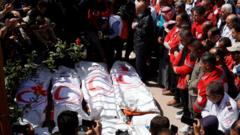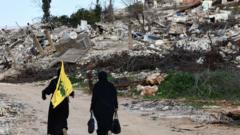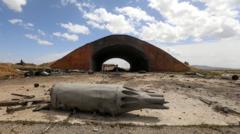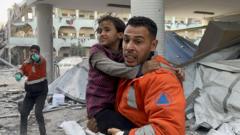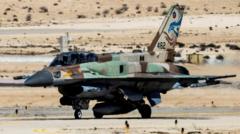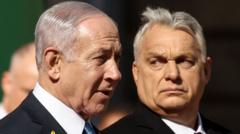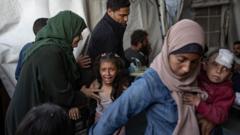Following an incident in southern Gaza where Israeli forces killed 15 emergency workers, the military has conceded that mistakes were made while maintaining claims of ties to Hamas. Calls for an independent investigation persist as video footage challenges initial Israeli narratives.
Israel Acknowledges Errors in Gaza Medic Deaths, Cites Hamas Links
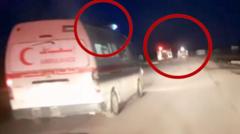
Israel Acknowledges Errors in Gaza Medic Deaths, Cites Hamas Links
Israeli military admits to mistakes in the killing of 15 medics, attributing some actions to perceived threats from Hamas.
Israel's army has publicly acknowledged its soldiers made errors in the tragic death of 15 emergency workers during an incident in southern Gaza on March 23. The military clarified that while mistakes were made, some of the actions taken were based on concerns regarding Hamas affiliations.
The convoy, comprising ambulances from the Palestinian Red Crescent Society (PRCS), a United Nations vehicle, and a fire truck, came under fire near Rafah. Initially, Israel's forces explained that they fired upon the convoy due to its "suspicious" approach in the dark, claiming the vehicles lacked headlights or flashing lights. However, evidence, including mobile phone footage filmed by one of the deceased paramedics, undermined these assertions by demonstrating that the vehicles were indeed illuminated as they responded to a call for help.
This video footage was disseminated by the New York Times and depicts the vehicles arriving at the scene just prior to the gunfire, with Refat Radwan, a paramedic who was killed, heard offering prayers moments before Israeli soldiers are heard approaching.
An official from the Israel Defense Forces (IDF) revealed that earlier gunfire had targeted a car carrying three suspected Hamas members. When the ambulances arrived on the scene, the soldiers, misinformed by aerial surveillance, believed they were under threat due to the convoy's sudden movement near the targeted vehicle, leading them to open fire despite there being no evidence of armament among the emergency personnel.
Israel has since admitted that its earlier statement regarding the ambulances' lack of lights was inaccurate, attributing this to the soldiers on duty at the time. Visual evidence, including the reflection of the medics’ hi-visibility uniforms and the clear markings on the vehicles, challenges claims made by the military.
In the aftermath, the deceased workers’ bodies were buried in sand to protect them from wildlife, and they remained concealed for almost a week due to safety concerns preventing international agencies, including the UN, from accessing the location. A subsequent aid team discovered Radwan’s mobile phone containing crucial footage of the incident.
While the IDF maintains that at least six of the medics were connected to Hamas, it has yet to present any evidence substantiating this assertion. The military also refuted claims that the medics had been restrained prior to their deaths, stating that they were not executed at close range, contrary to some reports.
A surviving paramedic reiterated to the BBC that the ambulances had their lights on during the incident and denied any association with militant groups. As public scrutiny intensifies, the IDF has vowed to conduct a "thorough examination" to clarify the sequence of events and the management of the situation.
Calls for an independent investigation have come from the Red Crescent and numerous international organizations, seeking accountability for this tragic loss and the broader implications for medical staff in conflict zones.





